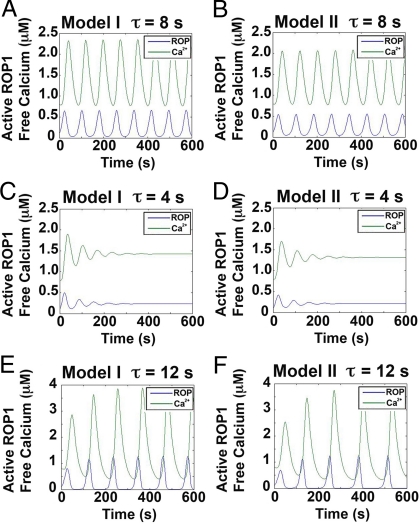Fig. 2.
Simulating the effect of time delay on the oscillation of apical ROP1 activity based on models I and II. (A and B) Given a proper time delay (τ = 8 s), model I (A) and model II (B) can reproduce the observed oscillation pattern for both active ROP1 and calcium. The simulation generates oscillation periods of ≈80 s and amplitudes of 0–0.6 μM for active ROP1 and 0.8–2.2 μM for calcium. Calcium oscillation lags behind ROP1 activity oscillation by ≈120 degrees. Parameter settings are given in Tables 1 and 2. (C and D) With short time delays (τ = 4 s), ROP1 activity and calcium oscillations are unstable. (E and F) With long time delays, the oscillation period is increased significantly, reaching ≈120 s at τ = 12 s.

